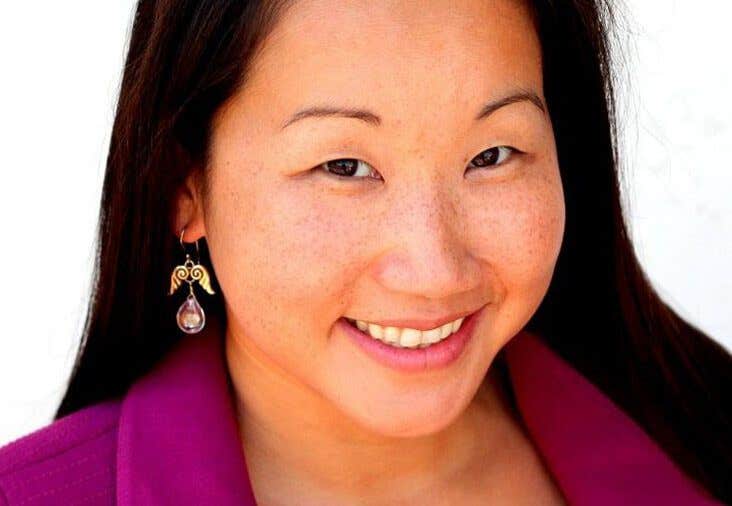The November 2005 issue of National Geographic was one of the bestselling in the magazine’s history. Dan Buettner, a National Geographic explorer and writer, wrote the cover story, “The Secrets of Long Life,” about places in the world where people live to 100 or more. He termed these places “Blue Zones” and three years later released the book, The Blue Zones: Lessons for Living Longer From the People Who’ve Lived the Longest. The book became a New York Times bestseller, as it became apparent that millions of people all over were interested in Buettner’s first-hand investigations into long-living and healthy populations.
Perhaps most interesting is how people in the Blue Zones are not only living longer, but better; that is, they remain active in their 80s and 90s, typically without the degenerative conditions that people suffer from in most of the industrialized world. In the United States, for example, the average lifespan is about 78 years (about ten years less than the Blue Zones), and almost 50 percent of adults have one of the three leading risk factors for cardiovascular disease.
Having seen and studied these remarkable people, Buettner has a new passion project: Bring—and implement—the secrets of living long and well to willing communities here in America, and around the globe.
From Curious Adventurer to Longevity Expert
Buettner has a long history of traveling off the beaten path: he holds three Guinness World Records for transcontinental endurance cycling and has an Emmy award for his PBS documentary about his “Afratrek” expedition, which covered over 11,885 miles through Africa. He is also an intensely curious adventurer, which, along with being comfortable with long-term trekking, made him uniquely qualified to unlock the “secrets” of these far-flung places.
Along with his brother Steve, Dan founded an adventure company called Quest in 1995. A pioneer in ed tech, Quest connected thousands of classrooms with their explorations around the world as they tried to unravel some of the world’s greatest mysteries, including the fall of the ancient Mayan empire, mapping Darwin’s route through the Galapagos islands, and retracing Marco Polo’s trail over the Silk Road.
It was during these expedition years that Buettner learned that Okinawa in Japan had the longest disability-free life expectancy in the world. It was a mystery he wanted to unravel, so he went there to discover the hows and whys. In addition to students, many adults also followed his particular journey, which showed him how interested people were in the idea of aging gracefully.
Buettner decided this would be his next big mystery and adventure—to visit places in the world where people lived long and healthy lives. He wanted to see what they were doing right, what they had in common, and what they could teach the rest of us about health and longevity. He returned to the States and approached people at National Geographic, who were excited about the project. He then got a research grant from the National Institute on Aging and assembled a team of top demographers, scientists, epidemiologists, and experts.
Together, they started studying the long-living people of Okinawa, Japan; Sardinia, Italy; and Loma Linda, California. His quest was to answer the question of what these far-flung people and places had in common, including a locale only an hour away from downtown Los Angeles.
The story, when it was finally published in National Geographic as the cover story, became a print and Internet sensation. It got coverage on all the major networks including Anderson Cooper, Fox, and CNN, and Oprah loved him.
Buettner wanted to go further and deeper for his book on the same subject, so he extended his research into other slivers of the world with centenarians who were living happy, healthy lives (low middle age mortality was also a factor). He added Costa Rica’s Nicoyan Peninsula and Ikaria, a Greek Island, to the list of official Blue Zones.
The Nine Principles (Pillars) of the Blue Zones
After years of study, Buettner and his expert group came up with the nine habits and practices at work in these far-flung locations and populations. He discovered it was an interconnected web with food at the center: Centenarians eat 95 percent plant-based foods focused around fruits, vegetables, whole grains, and beans. Meat is consumed in small amounts on rare occasions. Blue Zones residents also have a sense of purpose (family, volunteer work), have a strong community (friends, family), move naturally throughout the day (walking, gardening), socialize regularly, and regularly take some stress-relieving time to decompress. (See also: What do Do the Healthiest, Longest-Living People in the World Eat?)
Now that lifestyle medicine is a popular idea, some of these things seem like common sense. But Buettner’s team was ahead of the curve, and made the important point that overall health is determined by a number of factors. Even though what someone eats is a key element, all of the Blue Zones residents were doing healthy things regularly as part of their daily lives. Buettner describes it as a “combination of good habits.”
Buettner compiled the research and findings into The Blue Zones: Lessons for Living Longer From the People Who’ve Lived the Longest. It was a New York Times bestseller and made another big splash. He was on Oprah, gave a TED Talk, and was part of Bill Clinton’s Health Matters Initiative. People were hungry for more knowledge about how to live longer and enjoy their senior years.
With his team, he spent many months and years talking and meeting seniors who were enjoying happy, healthy lives. Every time he returned from one of his trips in the Blue Zones, he was saddened by the state of health in America. He went on to found Blue Zones as a company, and wanted to find a way to help people at home put the principles of longevity into practice.
NOW: Applying Blue Zones Best Practices to American Cities
His next quest was on home soil, as he sought to figure out a way to bring the “secrets” of the Blue Zones home. We recently spoke to Buettner about this huge mission, and about the difficulties in bringing back the Blue Zone lessons to American culture, rich with fast food, sprawling car-dependent suburbs, and one of the highest obesity rates in the world.
Since community was part of the reason that people in the Blue Zones thrived, Buettner knew he’d have to think big. He explains: “Health behaviors are contagious. If all your close friends are obese, there’s a 150-percent better chance that you are too. The reason 97 percent of diets fail in the long run is because you do them in isolation. Instead of just thinking about diet, we think of good health as an interconnected cluster of characteristics that connect and support each other.”
It’s not possible to create a community where there is none. So Buettner did the next best thing—he decided he needed to transform whole cities and communities to make healthy choices easier for residents. He met with Nancy Graham, editor of AARP magazine, with the idea of doing a city health makeover. She was on board. He then presented the project at the United Health Foundation, which was also impressed with the idea. They underwrote $750K toward the $1M project.
Transforming Albert Lea, Minnesota
With the funding secured, Buettner had to figure out where and how to start. He explains how he got the ball rolling on this exciting (and huge) undertaking:
“I asked a health behavior expert [Leslie Lytle] at the University of Minnesota to direct the project with me, and hired a former city planner [Joel Spoonheim] to run daily operations. Lytle and other experts at the University of Minnesota came up with the criteria. We wanted a town of 10-20,000 people with numbers that fit the national average for health conditions like cardiovascular disease and obesity. We also wanted it to be within driving distance to the Twin Cities.”
In 2009, Buettner, the AARP, and his team applied Blue Zones principles to Albert Lea, Minnesota. Buettner describes the impact it made at the time: “It was a huge success. The citywide health initiative raised life expectancy, lowered health care costs by about 40 percent, and residents collectively lost tons of weight.” The need is there, and other communities were eager to get on board after they saw that real changes could happen. “We’ve had over 300 cities contact us since we helped Albert Lea. About 70 percent of Americans are overweight and unhealthy; 87 million are suffering from prediabetes. People and communities know they have a problem, but they don’t know how to fix it. And we found great open minds in middle America.”
That was the beginning of the Blue Zones Project, the public health initiative that gets schools, employers, restaurants, grocery stores, residents, and leaders to work together to improve the health of everyone in the community. Buettner describes it as “transforming the places we live, work, and pray to support people in making healthy choices.” The effort is paying off, with tangible physical and economic benefits.
The Blue Zones Project: How They Do It
The public health initiative has what Buettner calls a “plant-slant” focus, which mimics the diet of people living in Blue Zones around the world (90-95 percent plant foods). But they go beyond just recommendations. He explains: “We have found that if you want to help people to eat plant-centered diets, there are some basic things that make it easy for them.”
These are:
- Good plant food has to be cheap and accessible in your community.
- You have to set up your kitchen so it’s easy to cook plant foods.
- You need time-honored recipes that taste great (like these Mango and Black Bean Tacos, adapted from Blue Zones).
- You need a social network of people who also enjoy eating plant-based foods.
The community aspect is at the heart of the project. Buettner explains, “It’s really hard to be a plant-based eater when all your friends and family meet up and eat ribs and BBQ all the time. It’s easier to fail if you constantly have to struggle or remember to do something. It has to be natural.”
To institute widespread change, the Blue Zones team sets up about 150 “nudges” in cities to make healthier choices easier. They start with community leaders: “We require that mayors, city councils, chamber of commerce, local CEOs, and superintendents of school understand and support what we’re doing. We have them sign a pledge to support the project to improve the health of their residents. And then we bring evidence-based ways to make healthy choices easier and unhealthy choices harder.”
The Blue Zones team works with cities to optimize ordinances and adopt food policies to make healthy food cheaper and more accessible. To do the latter, they make sure at least one-third of restaurants, schools, workplaces, and grocery stores work towards Blue Zones certifications.
“We give restaurants and schools certifications when they go 'plant-slant.' We recognize them when they offer some delicious plant-based meals and healthier options on their menu. They don’t have to be 100-percent vegan or vegetarian.”
At the community level, they work to set up networks and empower people to live healthier lives. They have found that if about 50 percent of the residents take up the pledge, the communities find success. “We set up Blue Zones potlucks where people can learn how to make delicious plant-based meals and taste them. From these, people build social networks around cooking and eating and enjoying plant-based meals. We teach people how to set up their kitchens for success and give them recipes we think they’ll love. We also set up and invite people to take purpose workshops to find volunteer opportunities that interest them. We encourage them to move, to connect, and to make their lives more meaningful.”
So far, the results have been inspiring. After Albert Lea, MN, the Blue Zones Project went to three California communities: Redondo Beach, Hermosa Beach, and Manhattan Beach. They’ve also brought the project to 15 cities in Iowa, Fort Worth in Texas, Naples in Florida, and Hawaii. In these communities, obesity, smoking, stress, and healthcare costs have decreased across the board. The quality of life has increased.
What’s next? According to Buettner, the rest of the country and then, the rest of the world.
(Photos by David McLain)

Related News
Get Our Best Price On The Forks Meal Planner

Forks Meal Planner takes the guess work out of making nutritious meals the whole family will enjoy.
SAVE $200 ON OUR ULTIMATE COURSE

Join our best-selling course at a new lower price!


